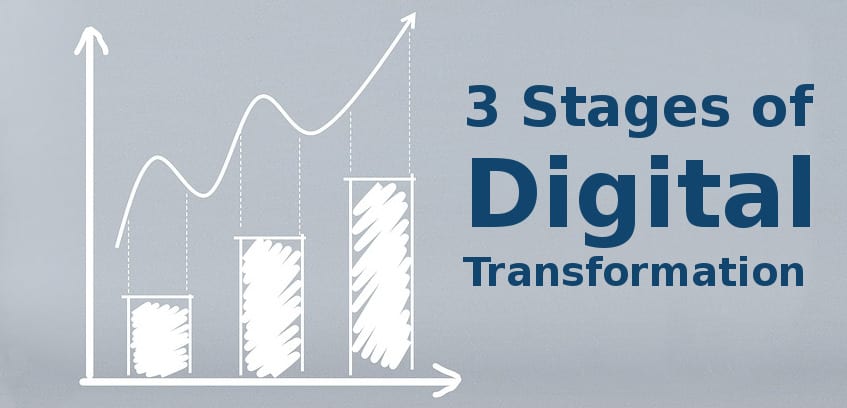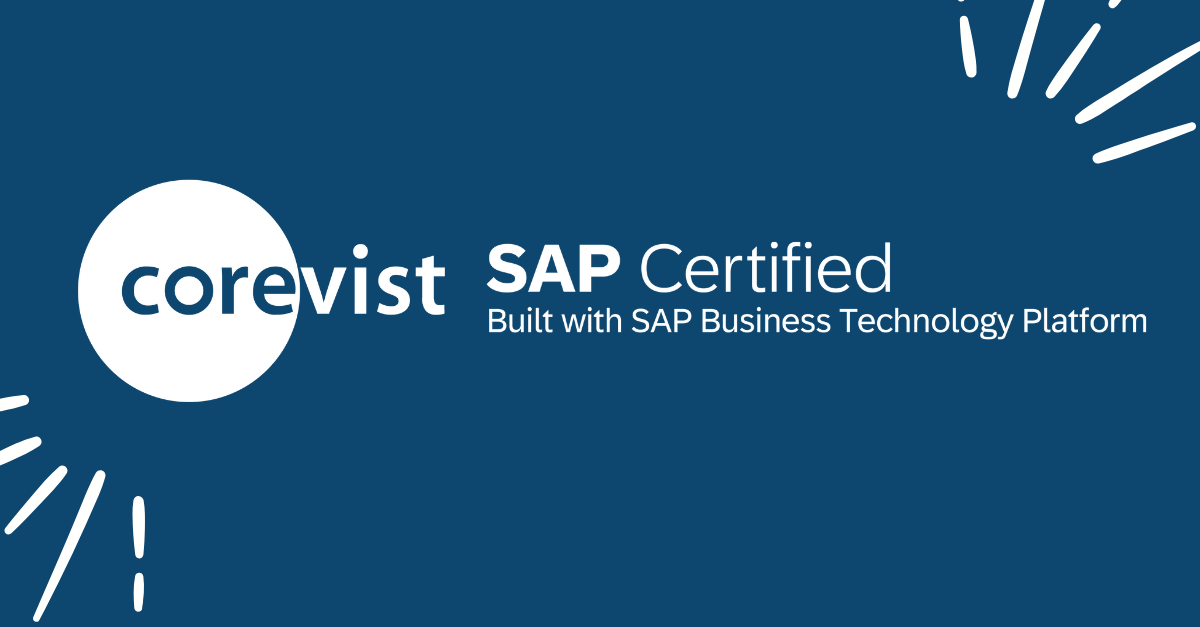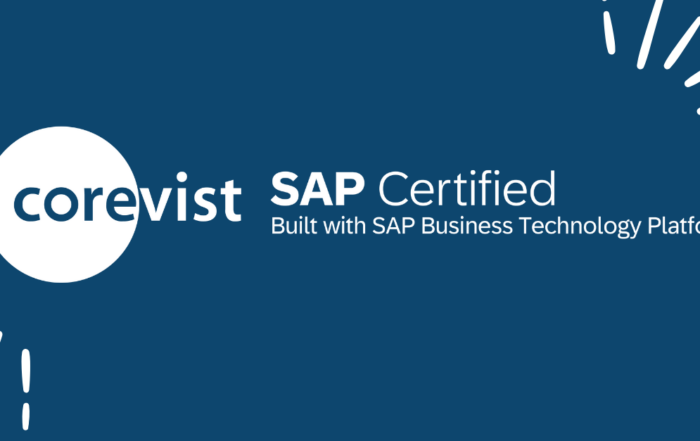Share
Author
George Anderson
Share
Digital transformation for SAP manufacturers
The phrase “digital transformation” gets tossed around a lot these days. It encompasses numerous business processes, new technologies, and even a mindset shift. As you’re fielding IT project requests from multiple departments, it can be difficult to figure out what should happen when.
At Corevist, we believe digital transformation projects should abide by one principle: Keep SAP as the system of record. When you place SAP at the center of your digital journey, everything else falls into place.
But just like road construction, you can’t close down the company while you launch new digital processes. How can you make the digital transformation as seamless as possible?
Breaking your digital transformation into 3 stages helps you prioritize projects. Here’s what those 3 stages look like.
1. Establish a core foundation for your digital transformation
When you’re evaluating software solutions for specific needs, it’s easy to lose sight of the fact that your business data lives in SAP. Every solution out there, whether it’s ecommerce, order management, or CRM, wants to be your system of record.
Trouble is, as a manufacturer running SAP, you already have a system of record. It’s your SAP ERP.
The first stage in your digital transformation is to place SAP at the center. Keep it as your system of record and clean up your SAP data. That way, you prepare your SAP business logic for exposure to other systems via integration.
Why it matters
SAP business rules should mirror your actual business processes. But SAP has a tendency to grow layer upon layer of business logic over the years. This creates inefficient processing overhead for your internal SAP users—and it doesn’t help user experience when you integrate to 3rd party software.
Get SAP in order now, and you’ll reap dividends in efficiency as you progress through your digital transformation.
2. Focus on making transactions efficient for power users
Got your core foundation set up for digital transformation?
Good. Because now it’s time to build a web foundation for your non-EDI customers. In other words, it’s time to put self-service web ordering in their hands.
Why? Because order placement and management is the #1 business process that benefits from digitalization. It’s why companies choose Corevist Commerce. Phone, fax, and email simply aren’t sustainable as order entry methods. You can’t scale them efficiently, and they cause friction for your non-EDI customers.
The solution? An ordering portal integrated to SAP that’s ready to go for your power users. Choose one like Corevist Commerce, and you’ll cover all processes related to ordering:
- Real-time order placement in SAP
- 100% error-free orders that are ready for fulfillment
- Web portal payments integrated to SAP
Why it matters
When you make the transaction process more efficient, you become (ETDBW) Easier To Do Business With for your customers—plus you conserve resources internally. With CSRs freed up from routine order entry, you can reallocate resources to more pressing issues.
Taking the long view, a real-time SAP-integrated ordering portal also paves the way for consumerization and the powerful marketing tools that come with a B2C-style experience.
3. Launch a Marketing-oriented catalog once your portal is thriving
First off, a caveat: Not every B2B company needs to get to stage 3. In some markets, a SKU-based order entry portal is just fine. These markets don’t need rich content, product photos, or cross-selling/upselling capabilities.
For other markets, though, a B2C-style catalog makes a phenomenal investment—just ask Mannington Mills, a leading flooring manufacturer who recently launched a full Magento catalog integrated to Corevist and SAP. Mannington’s customers needed a B2C-style experience with full browsing capabilities. The company launched a catalog with rich content, cross-selling/upselling, related products, and intelligent search.
The result? 150% sales growth in the digital channel since the launch of the catalog.
The key here is that Mannington started with their Corevist Commerce ordering portal and grew it to include a catalog when they were ready. Because they scaled up with Corevist, rather than replatforming, Mannington maintained their real-time integration to SAP. That means the catalog displays accurate contract pricing, inventory, and more.
Why it matters
For hybrid B2B/B2C markets, or for markets in which competitors have already launched B2C-style ecommerce, a full catalog is a must to stay competitive. Customers expect an Amazon-style experience on top of all the benefits of a real-time SAP B2B portal. As the B2B ecommerce market continues to grow, we expect this trend will only increase. The key is that Corevist Commerce is integrated to SAP in real time, so your ecommerce catalog displays real SAP data.
Moving forward: FREE case study
Curious what these 3 stages look like in real life? Download this FREE case study on Mannington Mills. You’ll learn how the company started with a B2B ordering portal, then added an Amazon-style Magento catalog and saw sales rise 150%.
Download the case study
[want_more title=”Learn more” subtitle=”FREE Case study: 150% Sales Growth with Rich Content” description=”Learn how a leading flooring manufacturer more than doubled sales with a B2C-style catalog.” button_text=”Download Now” button_link=”/” button_class=”btn btn-primary mannington-ae” title2=”See it for yourself” subtitle2=”Talk to us” description2=”Curious what Corevist Commerce can do for you? Let us show you a personalized demo. You’ll see ecommerce with real-time SAP data.” button_text2=”Schedule Demo” button_link2=”https://www.corevist.com/demo/” button_class2=”demo-popup”]









